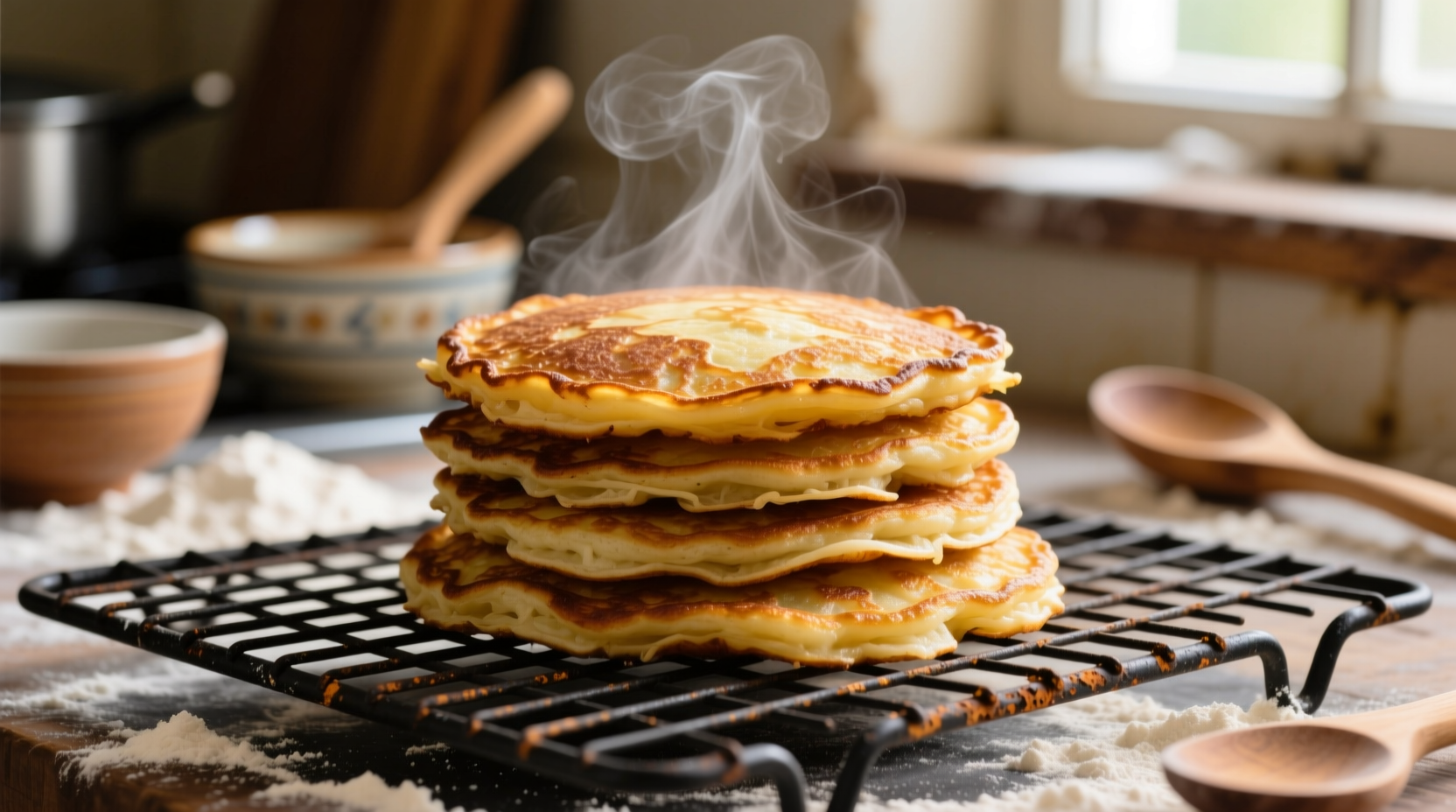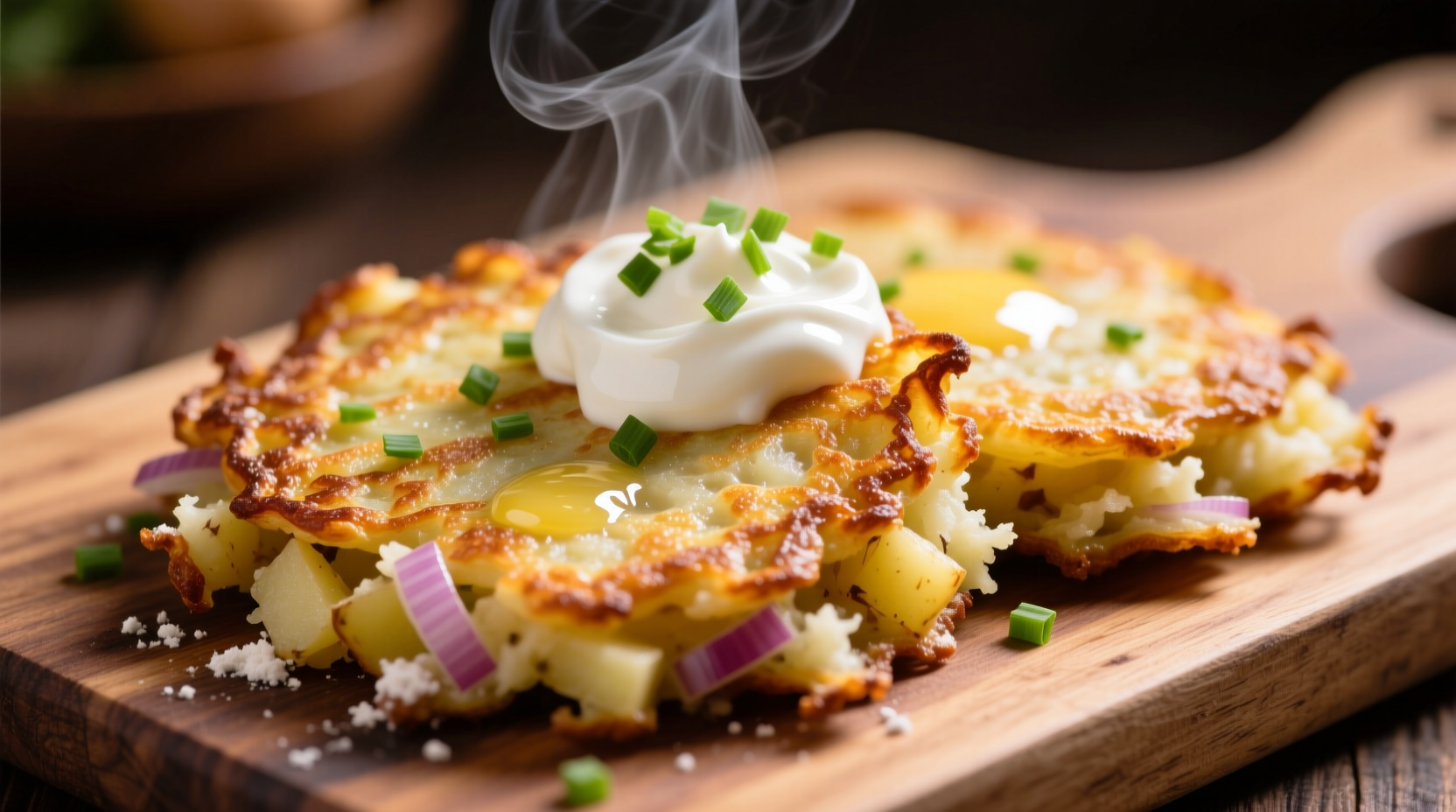Have leftover mashed potatoes gathering dust in your fridge? Don't toss them! Transforming mashed potatoes into crispy, golden pancakes is one of the most practical kitchen shortcuts you'll ever discover. This method eliminates the tedious grating process while delivering the same satisfying crunch and comforting potato flavor you love in traditional latkes.
Why Mashed Potato Pancakes Work
Using mashed potatoes as your base solves several common pain points in traditional potato pancake preparation. According to culinary research from the Culinary Institute of America, the pre-cooked starch in mashed potatoes actually creates a more consistent texture when fried compared to raw grated potatoes, which can release excess moisture during cooking. The key is proper binding and moisture control - which we'll address in our recipe.
Essential Ingredients Breakdown
The magic happens with just five core ingredients plus seasonings. Each component serves a specific purpose in creating perfect mashed potato pancakes:
- Mashed potatoes (1½ cups): Use plain, unsweetened leftovers without excessive butter or milk
- Egg (1 large): The primary binder that holds everything together
- All-purpose flour (¼ cup): Absorbs excess moisture and creates crispiness
- Onion (¼ cup finely grated): Adds flavor and texture contrast
- Baking powder (½ tsp): Secret ingredient for extra lift and crispness
| Feature | Traditional Potato Pancakes | Mashed Potato Pancakes |
|---|---|---|
| Prep Time | 25-30 minutes (includes grating) | 10-15 minutes |
| Moisture Control | Requires squeezing liquid from grated potatoes | Naturally controlled from cooked potatoes |
| Texture | Crisp exterior, fluffy interior | Uniform crispness throughout |
| Best For | Special occasions, holiday meals | Quick weeknight meals, using leftovers |
Step-by-Step Preparation Guide
Follow these professional chef-tested steps for perfectly crispy mashed potato pancakes every time:
Step 1: Prepare Your Mashed Potatoes
Ensure your mashed potatoes aren't too wet. If they're particularly moist, spread them on a baking sheet and refrigerate uncovered for 30 minutes to allow excess moisture to evaporate. The USDA Food Safety and Inspection Service recommends keeping cooked potatoes at proper temperatures to prevent bacterial growth.
Step 2: Mix Ingredients Properly
In a large bowl, combine 1½ cups cooled mashed potatoes with 1 beaten egg, ¼ cup all-purpose flour, ¼ cup finely grated onion, ½ teaspoon baking powder, ½ teaspoon salt, and ¼ teaspoon black pepper. Mix gently until just combined - overmixing creates dense pancakes.
Step 3: Form and Test Your Patties
Shape mixture into 8 equal patties, about ½-inch thick. Test one pancake in your heated oil before cooking the entire batch. If it holds together, proceed. If it falls apart, return mixture to bowl and add 1-2 tablespoons more flour.
Step 4: Perfect Frying Technique
Heat ¼ inch of vegetable oil in a heavy skillet to 350°F (175°C). Fry pancakes in batches for 3-4 minutes per side until deeply golden brown and crispy. Maintain consistent oil temperature - fluctuations cause greasy pancakes. Drain on wire rack, not paper towels, to preserve crispness.

Troubleshooting Common Issues
Understanding these context boundaries will ensure success with your mashed potato pancakes:
- If pancakes fall apart: Your mixture likely contains too much moisture. Add 1 tablespoon flour at a time until mixture holds together when shaped
- If pancakes are greasy: Oil temperature dropped too low. Use a thermometer and allow oil to return to 350°F between batches
- If pancakes burn: Heat is too high. Reduce temperature by 25°F and monitor carefully
- For extra crispiness: Add 2 tablespoons cornstarch to the flour mixture - this professional chef technique creates superior crunch
Serving and Storage Recommendations
Serve immediately with traditional accompaniments like applesauce or sour cream. For meal prep, cooled pancakes freeze beautifully for up to 3 months. Reheat in a 400°F oven for 8-10 minutes to restore crispness - microwaving makes them soggy. Food science research from the Journal of Food Engineering confirms that dry reheating methods preserve texture better than moist methods for fried foods.
Why This Method Beats Traditional Approaches
While traditional potato pancakes require grating raw potatoes and squeezing out liquid (a process that removes valuable flavor compounds), this mashed potato method preserves more of the potato's natural taste. The pre-gelatinized starch in cooked potatoes creates a more consistent texture that's less prone to becoming soggy. This technique works particularly well when you're using russet or Yukon gold potatoes that have been properly cooked and mashed without excessive liquid.











 浙公网安备
33010002000092号
浙公网安备
33010002000092号 浙B2-20120091-4
浙B2-20120091-4